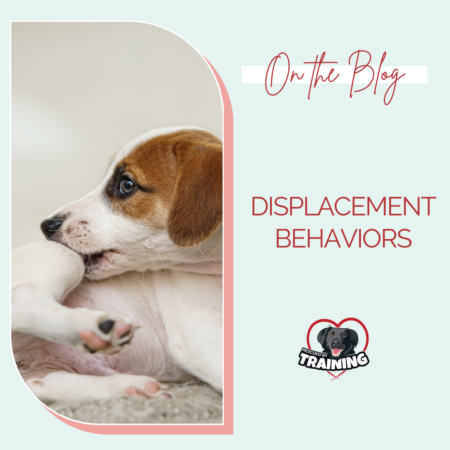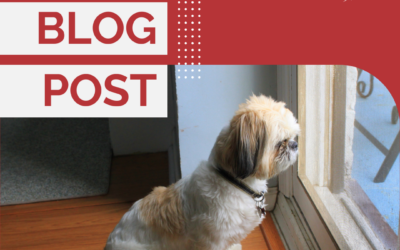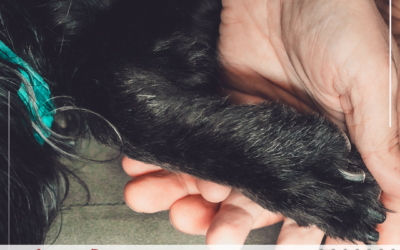Displacement behaviors are normal behaviors that are performed out of context and they can indicate if a dog is conflicted or anxious. I talk about them when I’m reviewing dog body language with clients, especially for fearful dogs or with my separation anxiety clients. I make the analogy to humans when we’re a little unsure of a situation and we may fidget and do activities like twiddle our thumbs or maybe play with our hair. We do something to occupy ourselves in moments of uncertainty to fill the time. And dogs can do the same thing when they’re feeling unsure. When I start to point out displacement behaviors often clients have these “aha” moments and start to realize that they’ve seen their dogs doing them and just never realized it. When people learn dog body language, they start to recognize when their dog is stressed, so they can work to reduce stressful situations and help their dog be more comfortable. Body language awareness is so key to helpful your dog feel safe. Grab my dog communication handout here!
Some common displacement behaviors include:
- Scratching
- Sniffing
- Stretching
- Drinking
- Eating
- Getting a toy
- Zoomies
- Shaking off
- Grooming
In my separation anxiety clients, the dog may be a little anxious about the owner’s absence, so when clients are watching their dogs during training, they may not see obvious vocalizing or pacing. But they may see more subtle signs the dog isn’t fully comfortable. If the dog is a little anxious – the dog wants to do something in that moment, so he displaces the suppressed behavior with something else such as a low level stress sign, like a lick or a yawn or maybe goes and gets a drink or water or scratches himself but he wasn’t really thirsty or itchy. That going for a drink or scratching were displacement behaviors in this context. These are completely normal things for a dog to do, but in that moment, they’re a little out of place. If you are aware of them and notice them then you can tell if your dog is feeling stressed or anxious instead of assuming he was just suddenly thirsty or itchy.
Of course, sometimes maybe your dog is thirsty or itchy, but this is why data tracking is so essential in training. If every time we are doing training your dog is suddenly itchy or thirsty, then we know something is going on. If it’s a one time thing, then he was probably just thirsty!
Be sure to sign up for my free weekly newsletter so you don’t miss out on big announcements, videos, personal stories, client successes and more! And don’t forget I have my self-paced courses, including my Separation Anxiety Foundations Course, available here!
Contact me or schedule a session if you need help.
Happy training!
![]()




